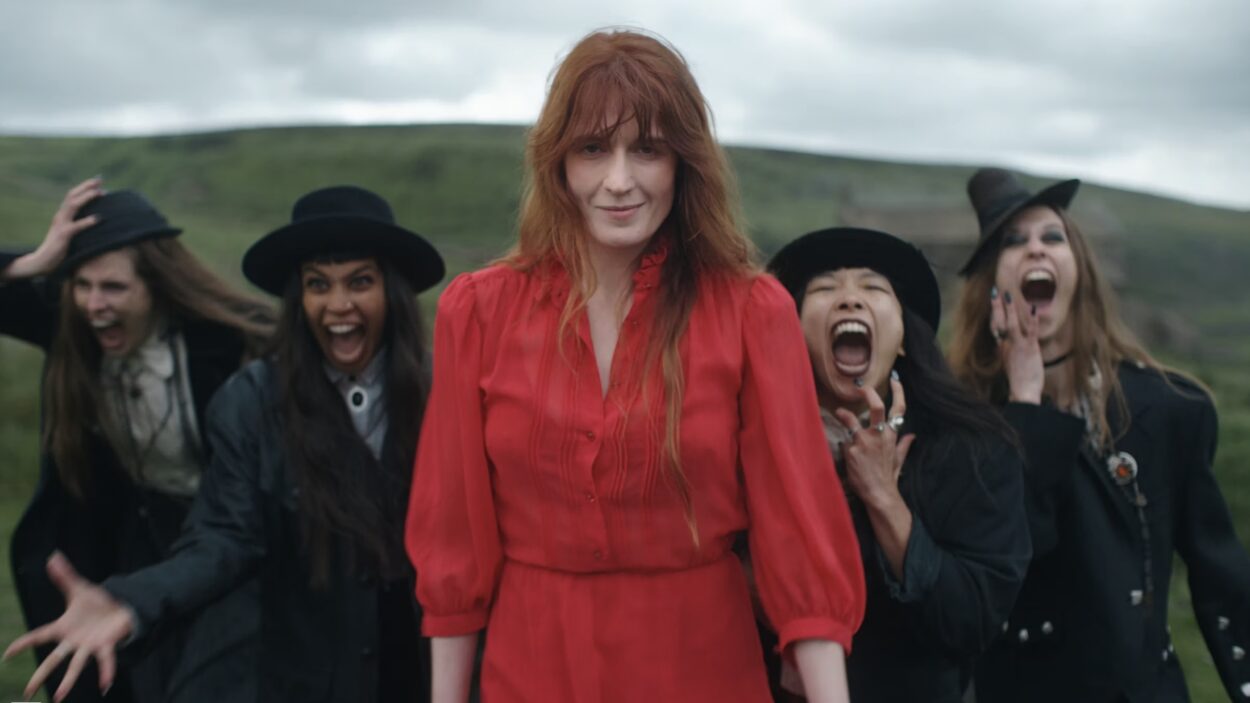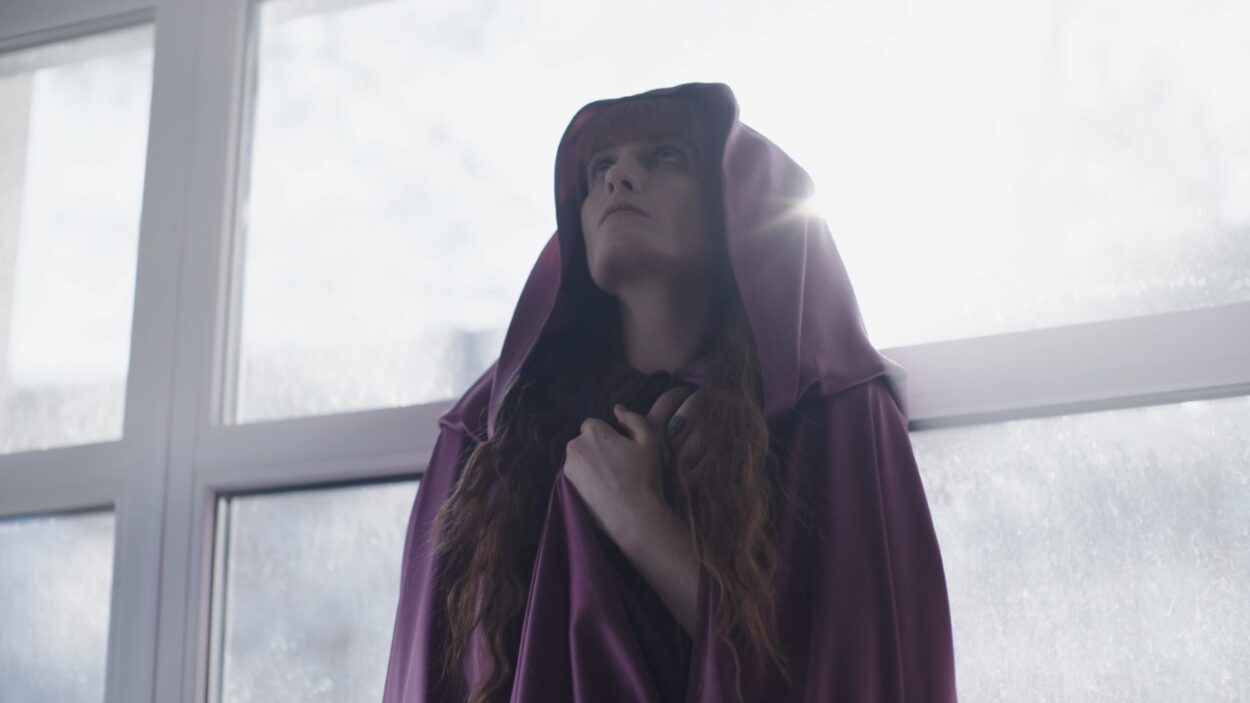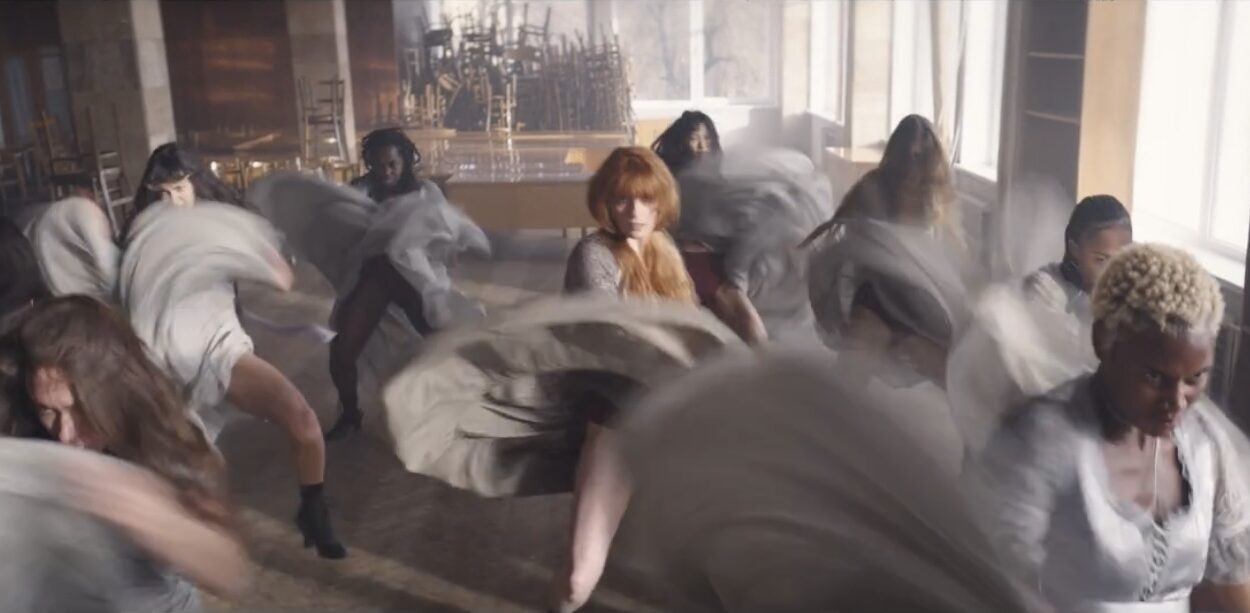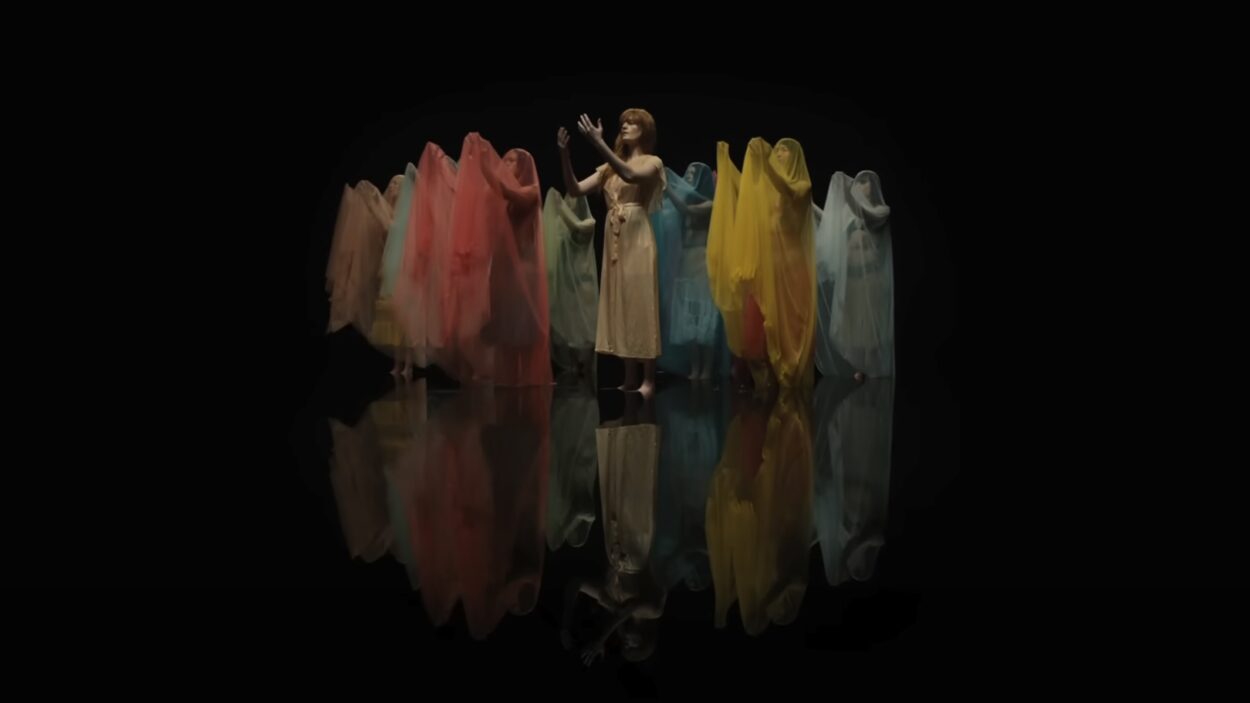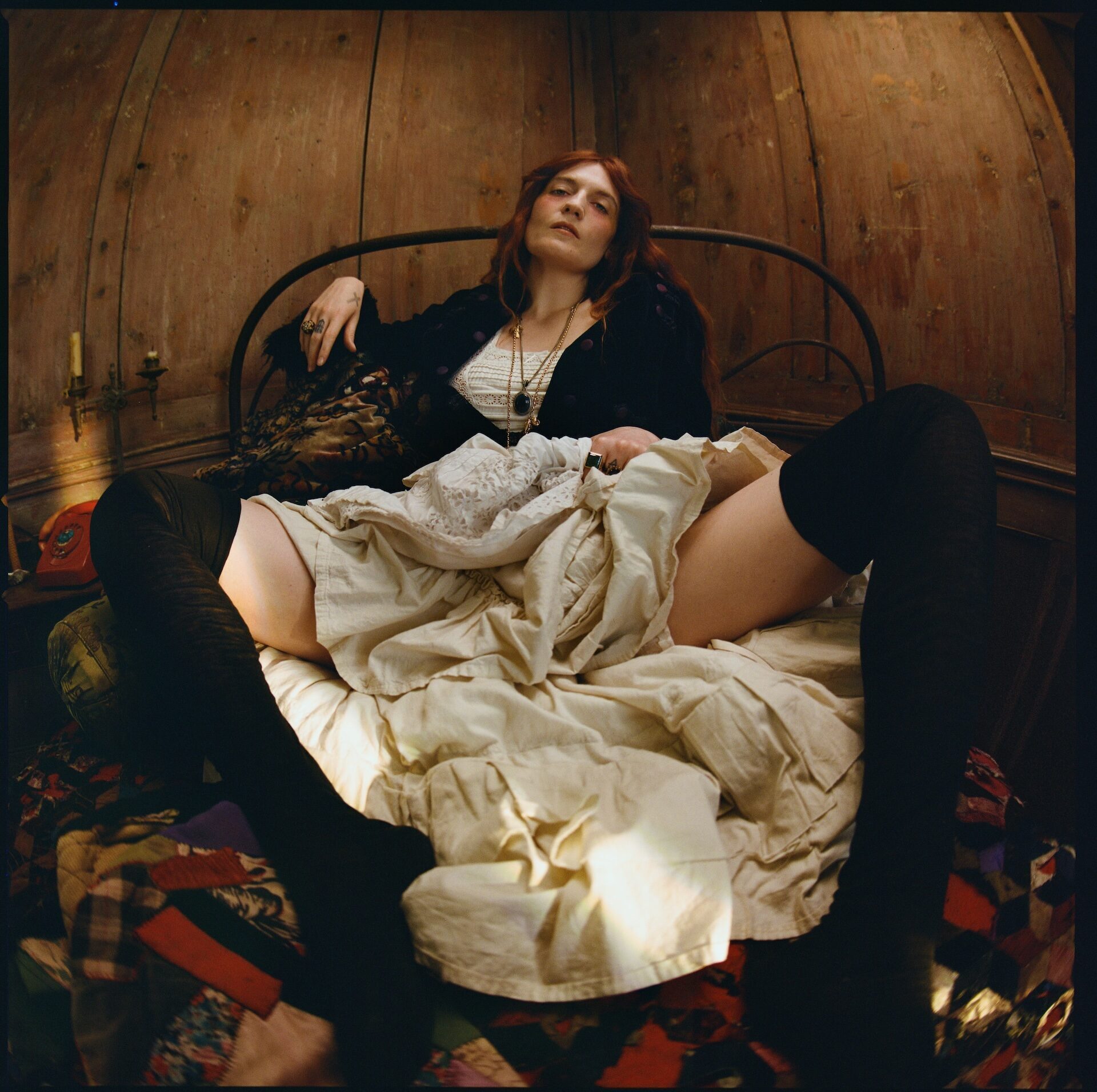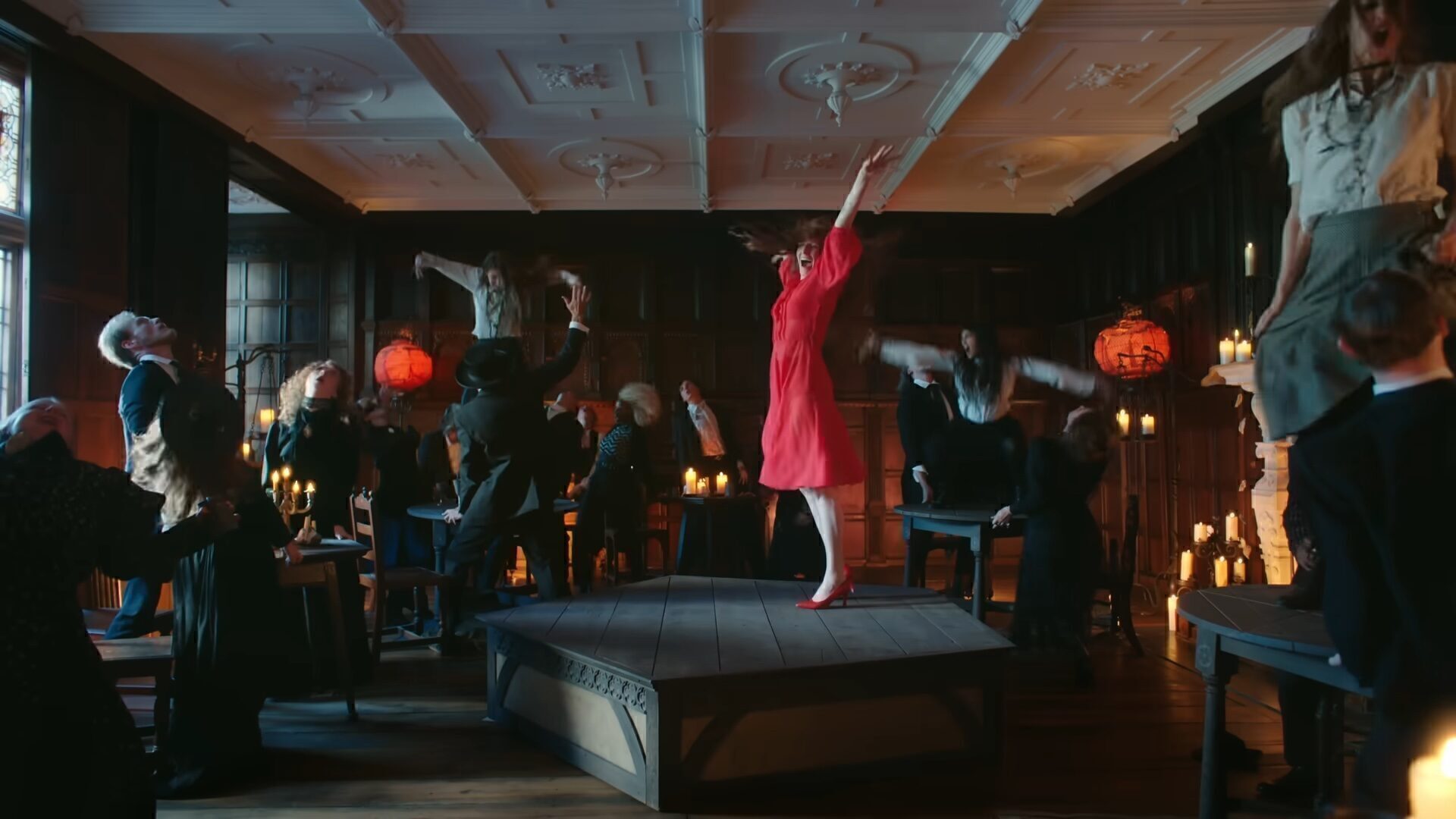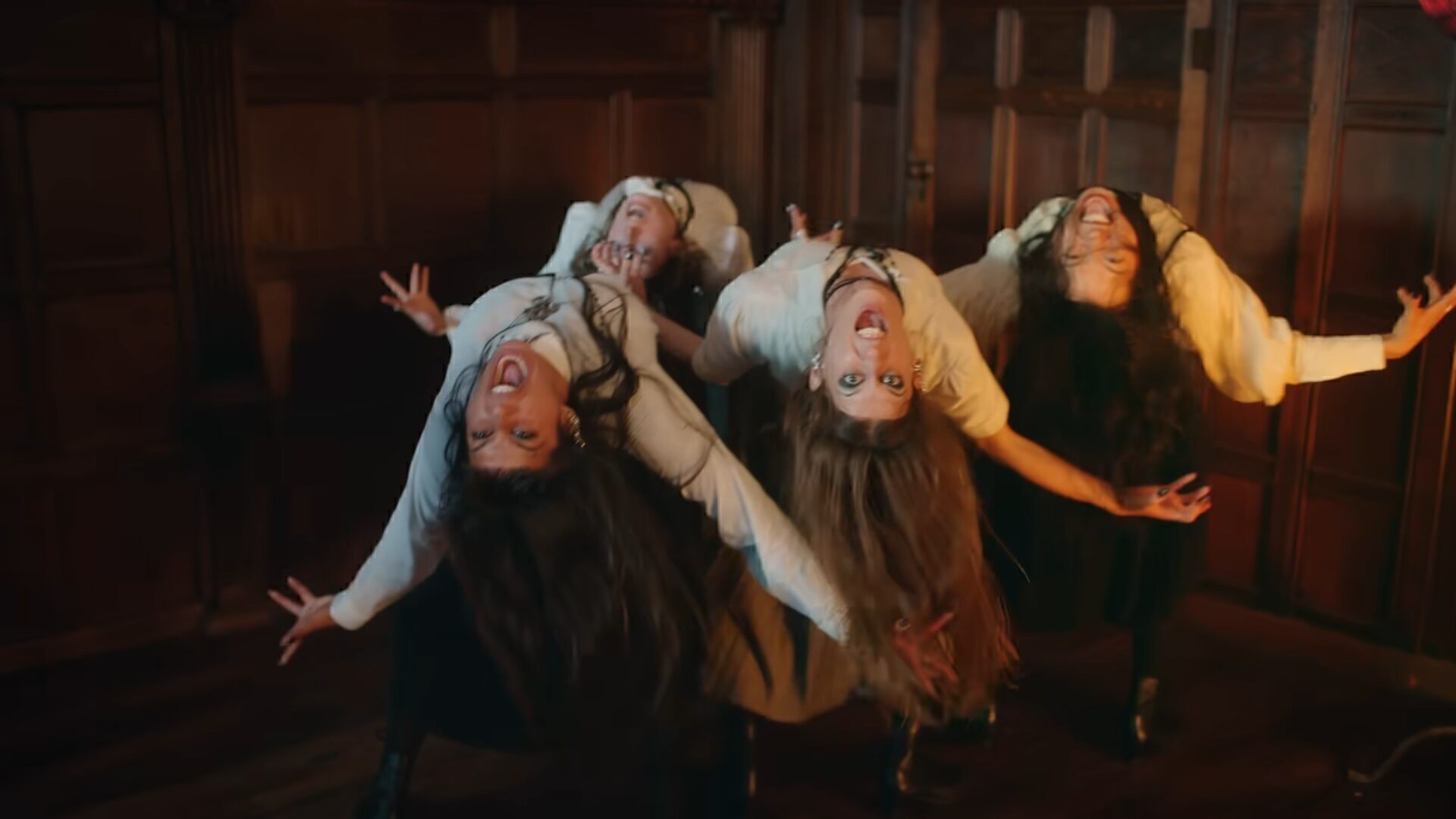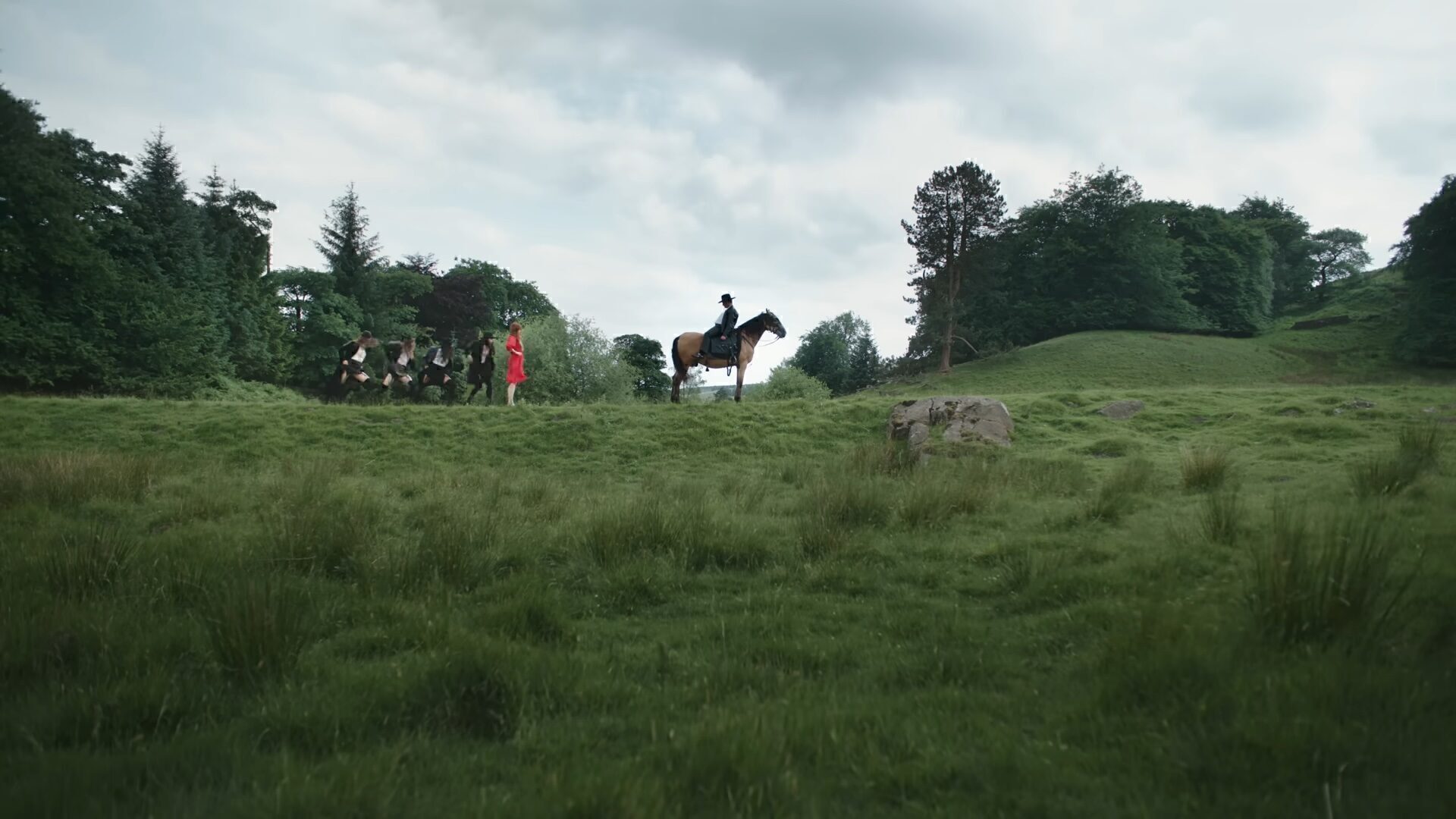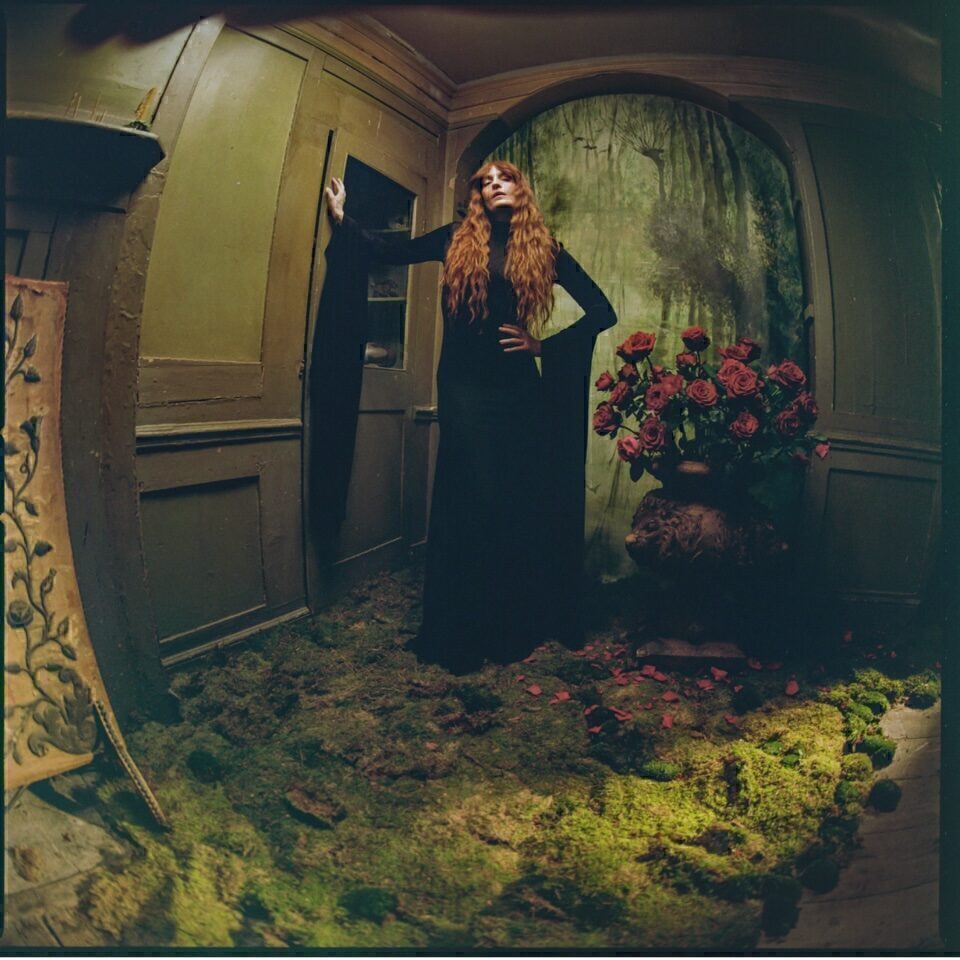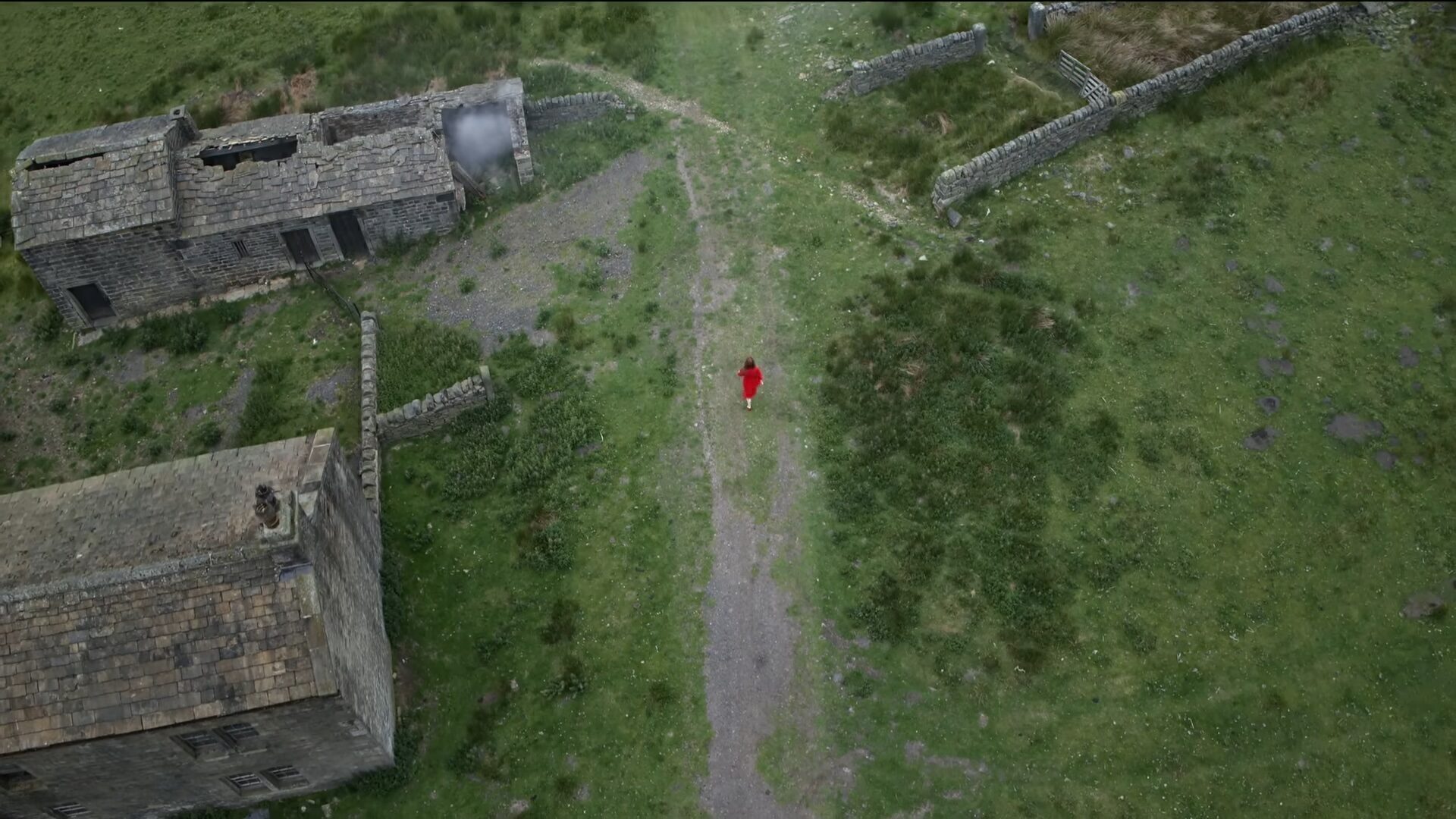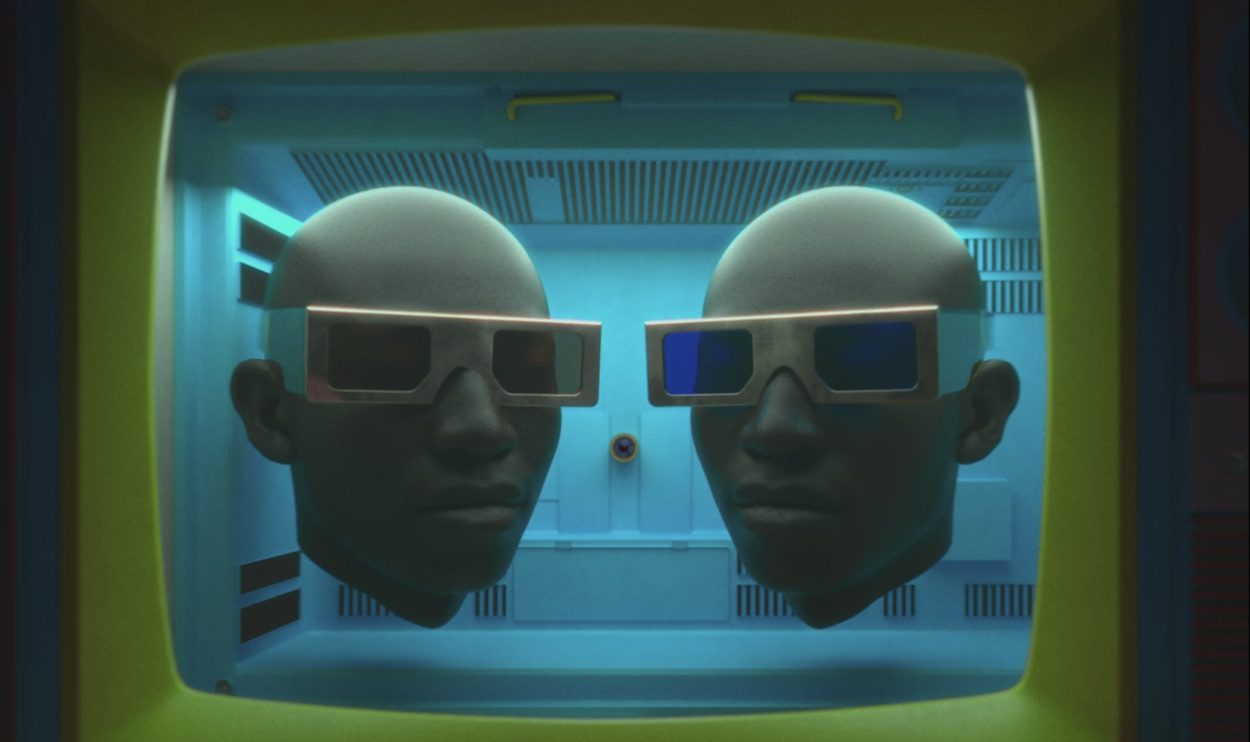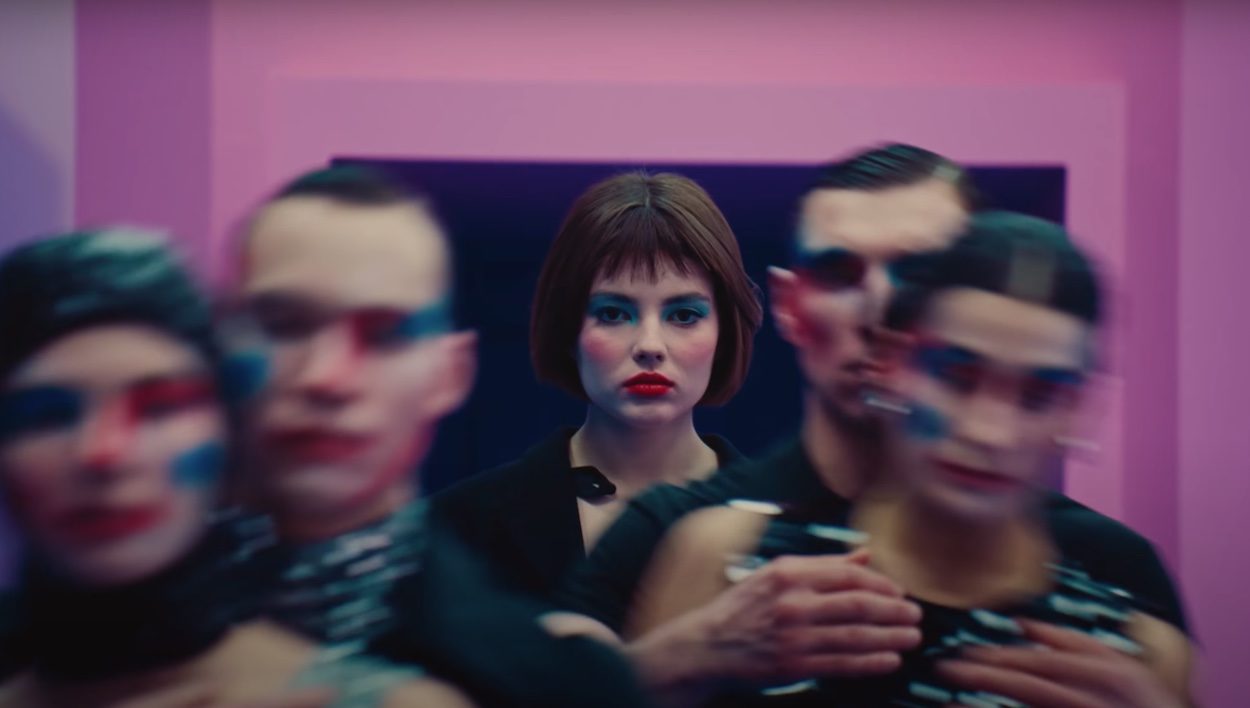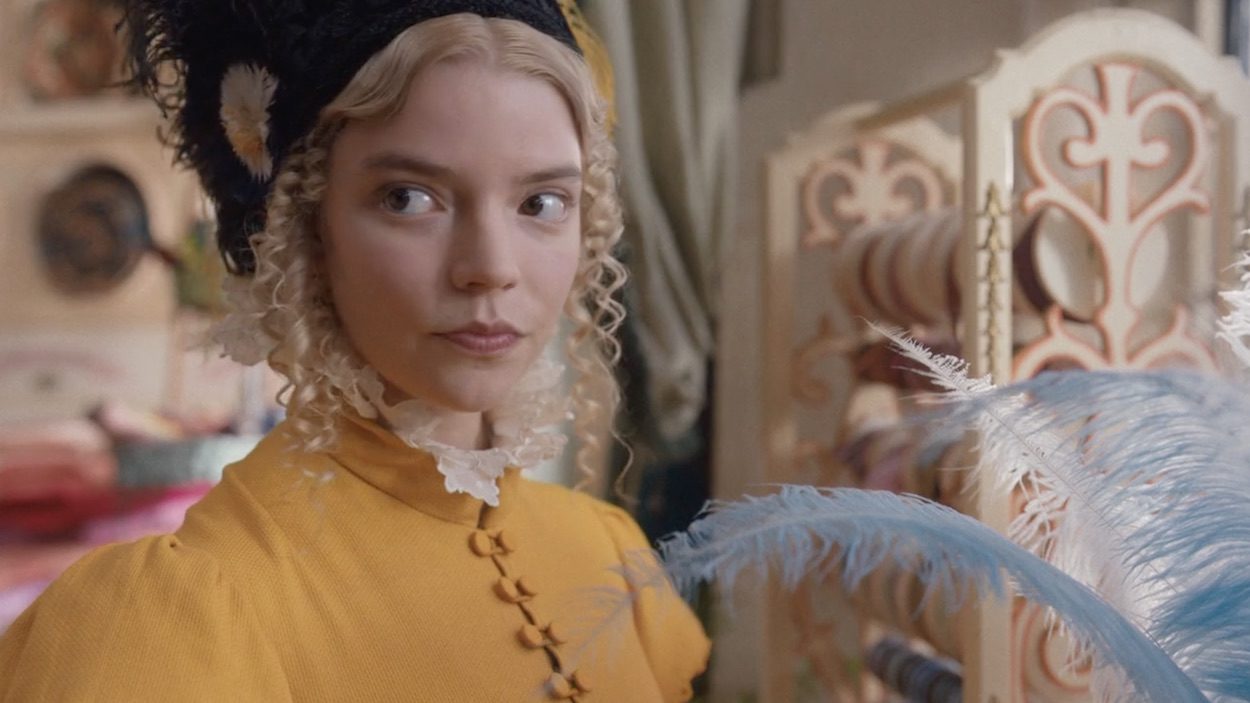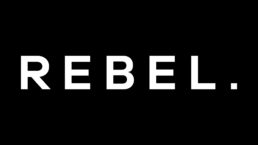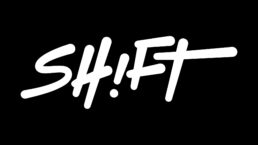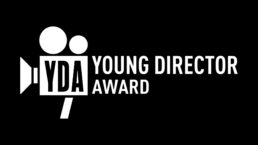Autumn:
I’m well, wonderful, thank you. But I’m so tired. I feel like I just gave birth.
Lyndy:
You certainly have. Oh God, what a creative powerhouse. All that social content, and the video … I like the screaming down the hole visual.
That’s a teaser we made called Bury A Scream. Florence released it without any explanation on Instagram— a mysterious, timely introduction to the world.
How does Florence scream like that and keep her voice in good shape?
She doesn’t. It’s my daughter Arrow’s scream. Florence is not allowed to scream, although I’m sure she’d really like to sometimes. She asked me if Arrow would mind being her scream. It was very sweet. Florence isn’t allowed to scream because she has this incredible octave range, and my daughter — who’s in a band called Starcrawler — screams regularly on stage. Arrow has been trained in how to do the least possible damage to her voice while doing her necessary screaming on tour. Arrow recorded herself screaming into a closet with a friend of ours in Los Angeles. It was hilarious and all very scientific.
Let’s flick back to your creative relationship with Florence, which began with you directing Big God, didn’t it? Then you did those four videos, King, Heaven Is Here, My Love and Free (starring Bill Nighy) for Dance Fever in Ukraine just before the invasion, as well as being the Creative Director for the campaign. Is this the first project you’ve worked on together since then? And did the creative process follow a familiar route, or did it feel different this time?
Florence and I have an ongoing conversation, which I feel very lucky about. She shares with me fairly early in the process as she’s finishing a record, which is amazing because I get a birds-eye view into her thought process and creative process. She’s an extremely visual artist as well as being a genius songwriter and lyricist. We tend to trade movies we’re watching, photographs, paintings. It’s the same way I’ve always worked with some of my favorite collaborators — long fluid conversations leading us up to the work.
What was different this time was that we were both determined to make sure it was very clear this was a new record. In today’s world of endless content with no timeline, you have to make a really strong visual statement so it’s clear this isn’t the last record, or one from three years ago. My advertising brain as a film director, photographer or a creative director is always trying to find hooks. I look for themes, colours, and clues to bind things together — even as they get forcibly separated on the internet.
Florence has such a strong sense of identity, but you must know this deeply. Is that something you’ve learned to intuit and then translate visually?
Yes. I love that question, actually. Knowing Florence and being trusted — which is one of the things I value most in this world — I see so many sparks of her personality, her artistry, wit, her heart, her sincerity, even in a single conversation. With all the artists I work with, I try to help find visual metaphors, or a character they can play, that shows a piece of the real them that I see in our personal engagement.
That’s the fun of doing this: creating hints towards something that’s based in sincerity and reality, but taken into a fantasy world that suits the story of the record. It always has to come from a real place — but then fans, old and new, can take that and make it their own.
Can you walk us through how you built the world for Everybody Scream? Where did you begin with an album like that — the lyrics, the imagery, the mood of the music? What was your interpretation of the narrative?
I usually hear the music in demo form pretty early on, and I see lyrics from Florence. For Dance Fever, we thought: let’s reinvent the fairytale. A lot of modern fairytales have removed the darkness, so we brought good and evil into one character — her King character — and created a kind of haunted fairytale-book look in the packaging.
For Everybody Scream, Florence said she had been watching tons of horror movies and thinking a lot about witchcraft. We started trading pictures, watching movies. I dove into Italian Giallo horror films like Suspiria and Blood Red and Blood and Black Lace. We spoke a lot about Rosemary’s Baby, The Exorcist, Posession. I combed those for imagery and inspiration.
It becomes a long exciting conversation, sending pictures, building a library of images to create a “bible” for everyone involved — costume, production design, locations. Brick by brick, we build the house, and that sets boundaries. It inspires everything from colour to costume. The mix for this album was horror movies but also the Old West — a bit of McCabe and Mrs. Miller. And we always have some kind of dead Can Can girl in there somewhere. Ghosts.
Do you ever disagree with each other? And how do you resolve that — how do you find the right direction?
That’s not how I work. Where there’s one idea, there are 5,000. If I have an idea and Florence doesn’t gel with it, usually the third idea is the one we needed — the “golden ticket.” By offering an idea that doesn’t work, and her not being sure, we often find the right answer in that process.
Some people get fixated on their plan. I don’t. For every idea I have, I’m usually cycling through 30 other options in my head. That’s probably why I’m good at last-minute changes and rewrites — even on set. When something goes wrong, I’ve usually prepared an alternative. That style of creativity builds trust.
I like working with decisive people. “No” is often a gift to me, because it tells me to focus on the other ideas that do work. I welcome opposition — it helps me find the right truth for her. And Florence is a thoughtful creator; she can easily picture what I’m saying. Not all artists are brilliant visual artists, but she is. And she likes surrounding herself with people she admires and trusts. I suspect she would only over-manage if she didn’t feel like she had a real partner.
Is there anybody between you — people who have to approve everything — or is it a direct line between you, Florence, and your collaborators?
Creatively, it’s a direct line. But her manager, Hannah, is brilliant — a creative collaborator in her own right too. She has a great mind for what might work better or worse in the actual launch. Florence’s team really supports the vision and works overtime to make it happen.
It’s very hard to make music videos now. There aren’t the budgets or the support. So having management that believes in quality — and an artist who does too — inspires everyone. Florence is a great leader, and a grateful leader. You put her in a room with a film crew, and they light up. She doesn’t just turn up at the last minute to do her part — she rallies a creative force. That makes people thrilled to work with her, and we don’t get to do that very often.
That’s also down to you — you’ve always developed long-term collaborative relationships with your crew. Like with Ryan Heffington. I think he’s a genius.
He really is a genius, and I don’t say that lightly. He’s not interested in who came up with an idea — he just processes it all. If he sees someone do something by accident and loves it, he’ll put it in.
And he’s so in tune with the camera. A lot of choreographers work as if it’s all meant for the stage, and then try to break it up for film. Ryan understands angles, pacing, and how to keep choreography going over different locations and camera angles. He has a choreographer’s soul with a director’s brain.
And of course, he’s literally made of magic. Dancers die to work with him. Florence adores him, and they have amazing creative energy together. She invents moves for herself that Ryan weaves into the piece. It becomes so organic, because he identifies the story in what she naturally creates and builds it in.
And I was very excited to finally bring costume designer, Shirley Kurata and Florence together. Shirley was nominated for an Oscar for Everything Everywhere All At Once. We began our careers together — she styled so many bands and videos for me early on and then on into our advertising work. She’d never worked with Florence before, and she seemed just perfect for this campaign. She’s perfect for anything, really. Florence and Shirley sparked instantly.
Then there was my long-time production designer, Kave Quinn, who did Emma. and many other projects with me. Shirley and Kave together were a quiet volcano of creativity. I guess I’m a bit of a matchmaker with heads of departments. And this was a very successful match.
Excellent. And you had your usual VFX collaborator?
Yes — my wonderful VFX supervisor, Denis Riva. Very rare in my experience to have a VFX supervisor who’s also an artist. That makes a huge difference, because everyone loves his energy on set, including Florence.
I have a delicate touch with VFX — ideally you don’t notice it unless its a driving story force. We had a lot of fun with Denis and Florence in executing the “puking pansies”
Benjamin Todd our DOP did an incredible job of chasing Florence and the wildness of all the witches in their performances and capturing it all on camera. We had to work at a very fast pace and make some tough decisions together. All while keeping our visual “bible” in mind.
And then there’s Odile Gilbert, the legendary hair stylist. Her portfolio is insane — from Sophia Coppola’s Marie Antoinette to the supermodels of the ’90s, she’s worked with almost every iconic photographer and fashion designer you could think of. Every time she agrees to do something with me, I feel so lucky. She’s such an encouraging visionary, a real creative force on set.
Florence’s makeup artist, Sarah Reygate, is also brilliant. Altogether, with Anonymous Content’s invaluable support, it was a beautiful team. That’s how I like to work — no one should be stranded on their own little island. It should feel like the most incredible dinner party, where everyone leaves with ideas.
Holistic?
Exactly. Departments shouldn’t compete for space — that creates bad energy. It starts with Florence, and then building the right talent and the right communicators around her. She’s electrified by talented people, and I only want to work with people like that.
Can I just mention the Devil’s Horsemen? Camille Naprous did all the horse and carriage work on my film, Emma. She’s worked on Game of Thrones, Napoleon, everything. She’s the top pro — the person who teaches most of the major actors how to ride for film.
I called her and said, “You can tell me to fuck off, but could you ever have a horseman, riding backwards?” I had a vision of a kind of dark fairytale character like the headless horseman. She was so excited — she immediately said we’re in, I’ve got the perfect stuntman for it, Guillaume Godts.
The Devil’s Horsemen brought Cartaz (the perfect horse), vintage tack, vintage saddles. The result was iconic: a stunt only a few people in the world can do… riding backwards, arms out, no stirrups, no attachment.
When you did Emma, you had that beautiful handcrafted box of references. Did you bring any of your idiosyncratic, handcrafted skills to this campaign?
Yes. I did all the calligraphy in the album packaging — the lyrics. I’m not a professional calligrapher, but I have my own style. I work with these brilliant designers, Thunderwing, who did the Emma. logo. They also did all the packaging, design, fonts for Dance Fever — and now this record too.
We decided my handwriting would mix well with their type design. Because it isn’t perfect, it feels more human, more personal. We wanted it to feel timeless, a little witchy, but also elevated. Some of that handwriting is already appearing, and more will show up across the campaign.
I also have an incredible image library that I shared on a private page with the whole team. It became a thorough visual reference for everyone. And I made a playlist for Florence to listen to during our photoshoot, since I also shot the album cover and all the campaign photography.
Florence and I wanted even the content — the teasers, trailers, “coming soon” clips — to feel cinematic. Not just cell phone snippets, but like scenes from a film. Something that looks like it’s been pulled out of a movie and dropped onto your screen. The Bury A Scream teaser was exactly that. Florence posted it without explanation, and it was fun watching fans try to decode it — is it a video? A film? An album? That excitement was part of the plan.
So the image we’re talking about is the album cover?
Yes. That is the album cover. The album and the first single are called, Everybody Scream.
Brilliant.
Florence + The Machine, Everybody Scream, out on Halloween. Today she’s releasing the special edition cover — I shot through a hole in the floor against a hand-painted backdrop covered in real shells. You’ll see that one posted on our accounts.
I love that. There’s something sexy and primal about the cover as well.
My goal was to play with how naked and sexual something can feel without showing very much skin. It’s wild with sexuality, danger, warnings and mystery — and I used a fisheye lens, which I hadn’t played with in a while. All the photos were shot on film.
Florence wearing Rodarte dress
Are you still doing campaigns for the Rodarte sisters?
I have a long relationship documenting them and doing special projects with them. We’re very close, and we always intersect. Actually, Florence is wearing a Rodarte dress in one of the photos just published by Pitchfork. They made Florence’s costumes for King and My Love for the last record. Rodarte are part of my family, really my original witch family. It was nice they could be part of this too in a small way.
So the album cover image connects to the videos, but stands on its own?
Yes, I see the connection. There are a lot of different kinds of witches in this work. Is Florence the witch? Is she overtaken by witches? Is she dabbling, or leading them? We wanted to ask those questions rather than answer them.
So what makes a witch is a really interesting question for me. Is a witch just someone who threatens you because you’re shocked by their confidence, or by their freedom of expression, or are you shocked by their wildness, or even their silence? Men can be witches too here. Our witch world is not gender-specific. I guess that’s why this theme is so powerful — it never stops expanding its boundaries.
Is there anything else you’d like to say about the album?
Yes — Florence wanted the styling to be very achievable for fans. At her shows, the fans create, collect or sew wildly creative costumes inspired by her work. For Everybody Scream, we wanted to feed that creativity, but make it accessible.
So the witch choir — the four dancers — were styled like Teddy Girls. Post-war rebellious teens who wore Victorian and Edwardian cast-offs, mixed with modern (late 40’s early 50’s) oversized jackets, hats with veils. Black stockings with suspenders. These are things you can find at a car boot sale or a vintage store. We wanted a feeling like they were a dangerous witch gang. There was also a bit of Clockwork Orange influence in the mix. Shirley Kurata created all the costumes from hunting vintage in charity shops and antiques markets and digging through some of her favorite costume houses both in Los Angeles, our home, and London. It was very fun to witness.
The whole process felt like making a movie — and honestly, I wish it was a movie.
